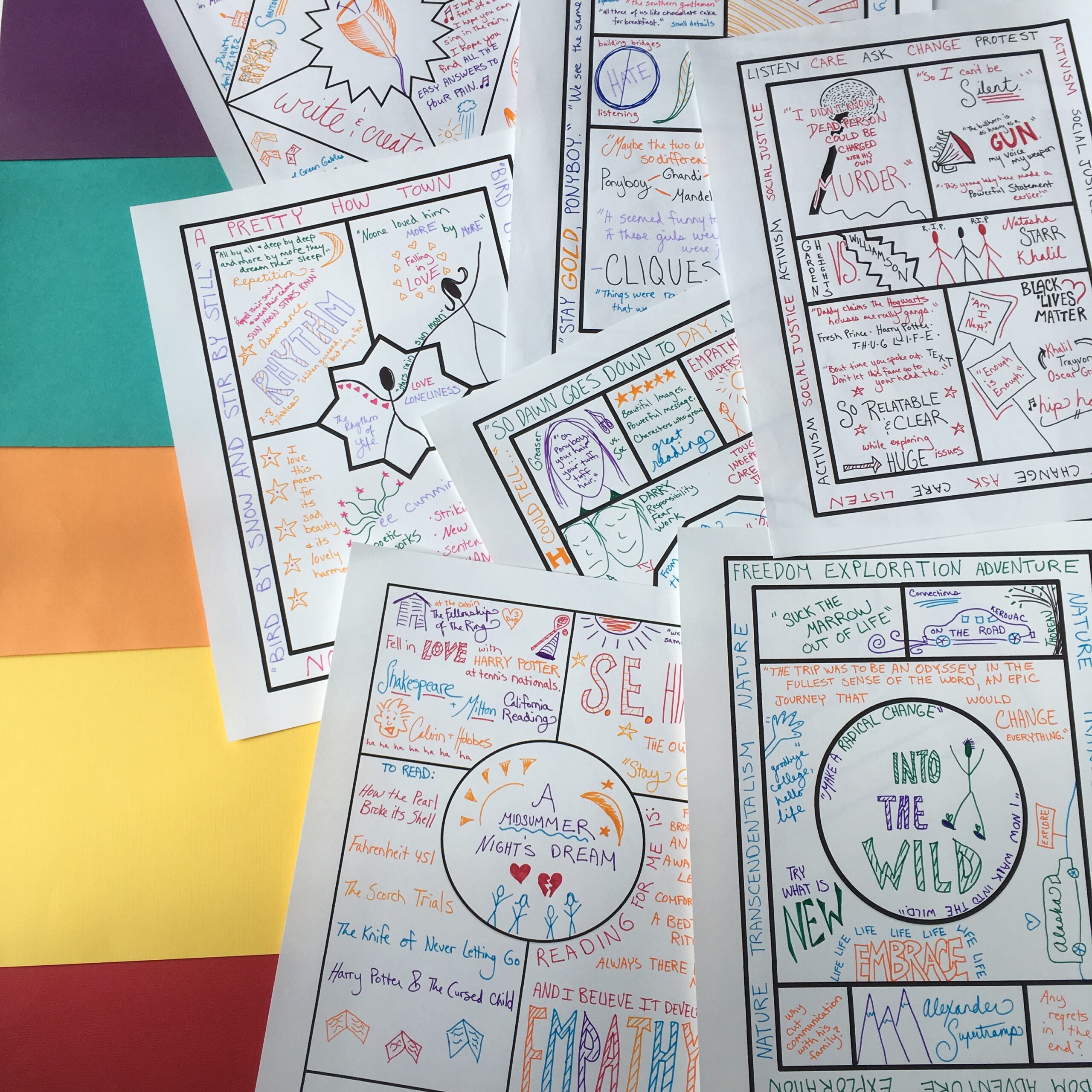
Today on the podcast, we’re sitting down with Martina Cahill, who goes by The Hungry Teacher online. One of her great gifts is helping middle school ELA teachers rock it with choice reading and book clubs, though I believe a lot of what she teaches can easily apply to high school too, especially when it comes to cultivating a culture of reading, trying out different forms of book clubs, and rolling out book tastings that make an impact.
If you’ve ever wondered what you can do in advance to help make your book club unit a success, you’re going to find some really helpful ideas in this conversation. So let’s dive in!
You can listen in to this episode below, click here to tune in on any podcast player, or read on for the full post.
Getting Started with Book Clubs
If you’re ready to dive into book clubs, it’s important to set students up for success. The first step is to establish a culture of reading in your class so that students feel comfortable reading independently and choosing books that actually interest them.
Need a little help with this step? Check out podcast episode #142, “Build a Culture of Reading.” But for the quick version, think about things like building a classroom library, displaying popular books however you can, starting a First Chapter Friday program, book talking your favorite books on the shelf, and incorporating some independent reading time in class.

As students begin to see themselves as readers capable of finding and enjoying their own books, they become far more ready to thrive in book clubs.
Book Club Variations
Although Martina lists thirteen different types of book clubs on her blog, there’s one option that stands out as a favorite among many teachers because of its flexible structure.
When you have a lot of required content to cover (and not a lot of time), you can use book clubs as the vessel for whatever you need to teach.
Imagine you’re teaching point of view. You might share a piece of a required text and go through an activity together to analyze point of view. Then your students can break into their book clubs and tackle the same topic with their own choice texts.
Book clubs don’t have to be something you do on top of what you’re doing; you can use them to drive home the points of your lessons, almost like the independent portion of a workshop class.
This type of “club” activity can be done with a whole class novel, book club book, or independent reading books. It’s flexible, easy-to-implement, and helps create a positive reading community.
Ready to jump into book clubs, but need a bit more information? Be sure to grab Martina’s Book Club blueprint.

Helping Students Choose Books for Book Clubs
Book Tastings are a great way to allow students to sample books at different stations, giving them time to check out as many books as possible in one class period. Allowing this time for students to sample books ensures that everyone is able to find a book club book that they will actually want to read.
This works well if you have a selection of specific books for your book club – say a variety of books on the subject of “Coming of Age” or a variety of memoirs or verse novels (check out episode 196 to hear about verse novel books clubs!). But it also works if you want to run book clubs where everyone simply chooses a book in a certain genre or even any book they’re interested in from your choice reading library before joining a group.
Not only will this process help students find a book to read for that book club, they’ll probably end up with a lovely TBR list for the future. A valuable asset in any reading program, for sure.



Shifting the Book Club Grading Process
It’s important to remind ourselves that not everything students do needs to be graded, but there has to be some accountability to ensure participation and learning.
One idea for holding students accountable during book clubs is to focus on one graded task per week. This could be a grade for a discussion, a reading response that’s supported with text evidence, or something else that feels significant to the topics being covered that week.
This allows the work to be more meaningful while also cutting back on the teacher paper trail and workload.
Finding Success with Book Clubs
Martina’s first successful book club was a verse novel book club to support learning in her poetry unit.
After feeling underwhelmed by her required curriculum, she decided to try a verse novel book club. She soon found that her students were finishing multiple books (when she was usually struggling to get students to finish one book).
Because she had students reading several books, she discovered the fact that there was a lot of flexibility in the book club structure and that not all students needed to be reading the same book for the book club discussions to be successful. Hooked by this success, she went on to continue with many different variations of book clubs in her classroom, always tweaking and experimenting (more on that in a second!).
A Few Final Words of Book Club Advice
If you, too, are sometimes bored with your required curriculum, Martina’s advice is don’t be afraid to try something new with book clubs!
Even if it’s not immediately successful, in time you’re sure to see success through the book club process. Book clubs can be a wonderful part of the bookish culture in your classroom, providing your students with those two marvelous things – voice and choice!
Connect with Martina
You can find Martina on Instagram where she shares more about book clubs, independent reading and writing.
You can also visit her website here.



























